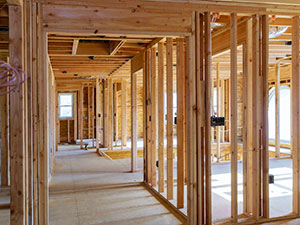
Foam insulation is a highly effective option for improving energy performance in commercial buildings throughout Sandpoint, ID. With cold winters, warm summers, and varying moisture levels, maintaining an airtight building envelope is essential. Foam insulation helps reduce energy loss by sealing gaps and limiting air infiltration, allowing better control over indoor conditions and overall efficiency.
Reach out to Flag Ship Foam & Coatings to learn more about foam insulation solutions for commercial properties in Sandpoint, ID, and improve energy efficiency throughout your building. Call (208) 946-3031.
Foam Insulation Is the Secret Weapon Against Air Leaks
Understanding Air Leaks
Air leaks occur when outside air infiltrates the building through cracks, gaps, and weak spots in the structure. In a commercial property, these leaks often go unnoticed because they can hide in attics, wall joints, electrical penetrations, window seams, and mechanical openings. Even small gaps can significantly affect indoor comfort and energy bills.
Foam insulation is unique because it expands upon application, allowing it to seal even the smallest openings. Unlike batt or loose-fill insulation, which only covers an area, spray foam forms a continuous barrier. This airtight seal is critical in Sandpoint’s climate, where temperature swings place constant pressure on building systems.
A commercial structure without proper air sealing can lose heated air during winter and conditioned air during summer, forcing HVAC systems to work harder. Foam insulation reduces this strain, leading to better indoor temperature stability and lower operating costs.
Foam Insulation Stops Air Leaks

Foam insulation’s strength lies in its chemical structure and application method. When applied as a liquid, it expands into a thick foam that adheres tightly to surfaces. This makes it especially effective for commercial buildings with complex layouts, irregular framing, or multiple penetrations in walls and ceilings.
Superior Expansion and Adhesion
Spray foam can expand up to 30 times its liquid volume, filling cracks that other materials miss. It sticks to wood, steel, concrete, and most substrates used in commercial construction. This capability makes it ideal for older buildings in Sandpoint, Idaho, where gaps often form over time due to seasonal temperature changes.
Higher R-Value per Inch
Foam insulation offers one of the highest R-values available, meaning it has excellent thermal resistance. By creating both insulation and an air barrier in one application, it reduces the energy loss that typically occurs when separate materials are used.
Moisture Resistance and Added Durability
Sandpoint’s weather patterns include snow, rain, and moisture-heavy seasons. Foam insulation helps guard against condensation by blocking the air movement that typically leads to moisture accumulation. Commercial building owners benefit not just from improved energy efficiency but also long-term protection against mold growth and structural weakening.
Foam Insulation as a Long-Term Investment
While foam insulation may require a higher upfront investment than some traditional materials, its long-term value is significant. Commercial properties, especially those with high energy demands, benefit from reduced utility bills, improved HVAC efficiency, and better indoor comfort for employees and customers.
Another advantage is noise reduction. The airtight barrier created by foam insulation naturally dampens sound, which is valuable for businesses near busy roads, industrial environments, or high-traffic areas in Sandpoint.
Additionally, foam insulation contributes to better indoor air quality by reducing the entry of dust, pollen, and outdoor pollutants. By eliminating gaps where outside air can enter, commercial buildings maintain a cleaner and healthier indoor environment, an important factor for facilities like offices, clinics, restaurants, and manufacturing spaces.
Foam Experts
Air leaks are a common source of energy loss in commercial buildings and can lead to higher operating costs over time. Foam insulation provides an effective solution by sealing gaps that allow air to escape or enter the structure. For commercial properties in Sandpoint, ID, this approach supports improved energy efficiency, stronger building durability, and long term cost savings.
Reach out to Flag Ship Foam & Coatings to discuss foam insulation options for your commercial property in Sandpoint, ID, and take steps toward eliminating hidden air leaks. Call (208) 946-3031.
FAQ
What types of commercial buildings benefit most from foam insulation?
Warehouses, offices, retail stores, medical facilities, and industrial buildings all benefit due to foam insulation’s superior sealing and energy performance.
Can foam insulation reduce heating and cooling costs?
Yes. By sealing air leaks and increasing thermal resistance, foam insulation reduces the workload on HVAC systems, which can lower energy expenses.
Is foam insulation safe for indoor environments?
Once cured, foam insulation is stable, non-toxic, and contributes to improved indoor air quality by preventing pollen, dust, and pollutants from entering.
How long does commercial foam insulation last?
Spray foam insulation can last decades without degrading, making it one of the most durable insulation options for commercial buildings.